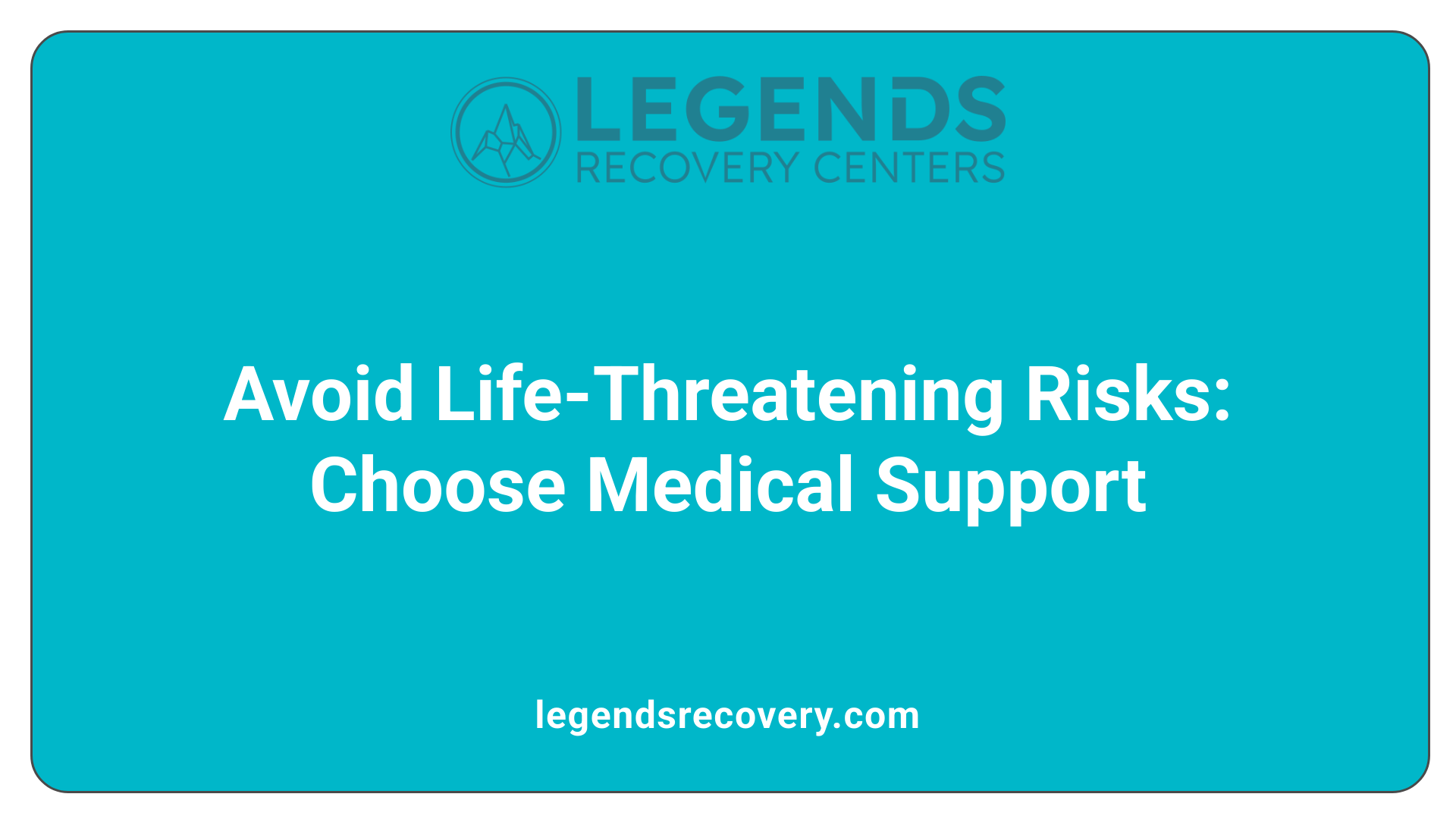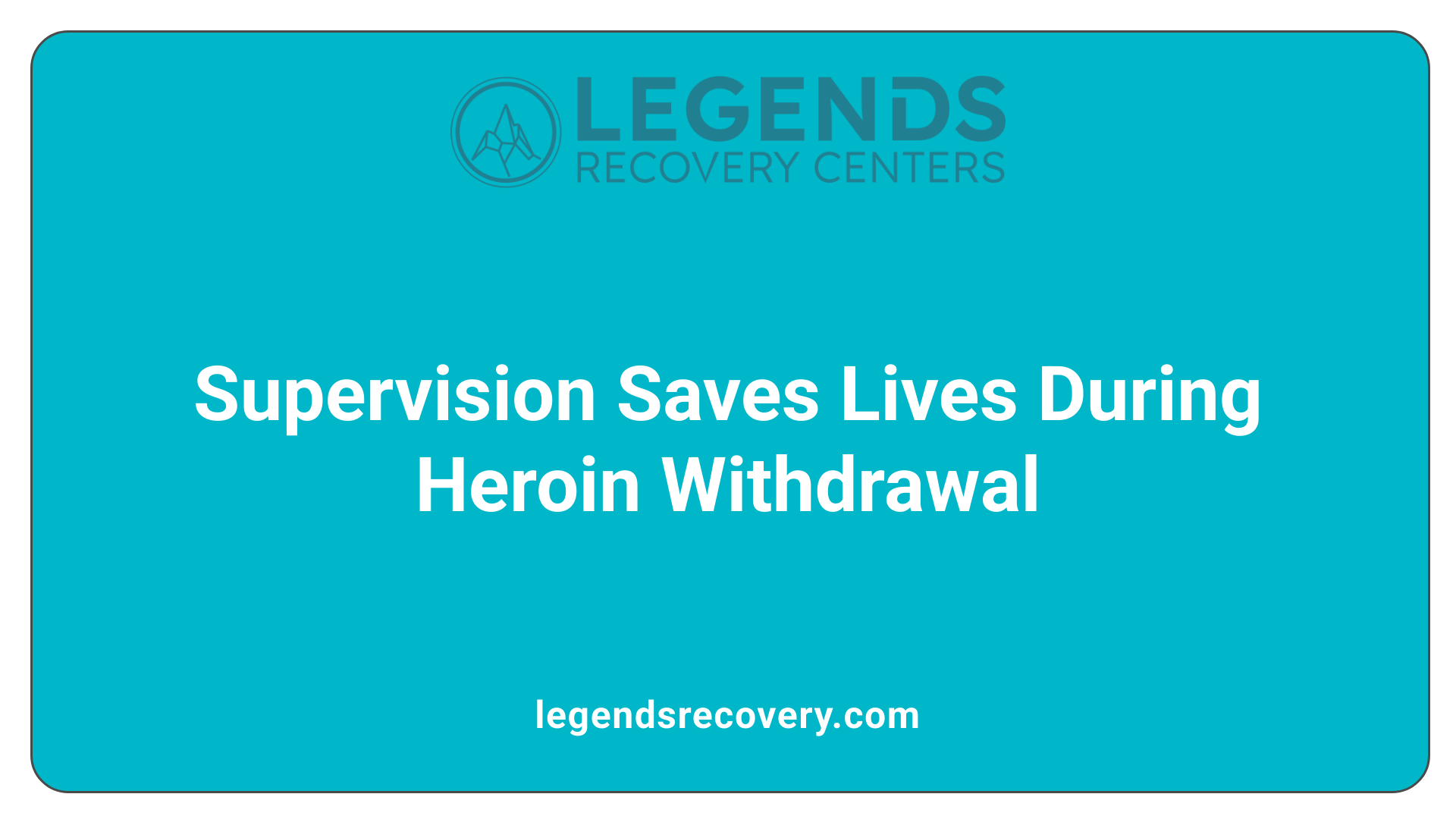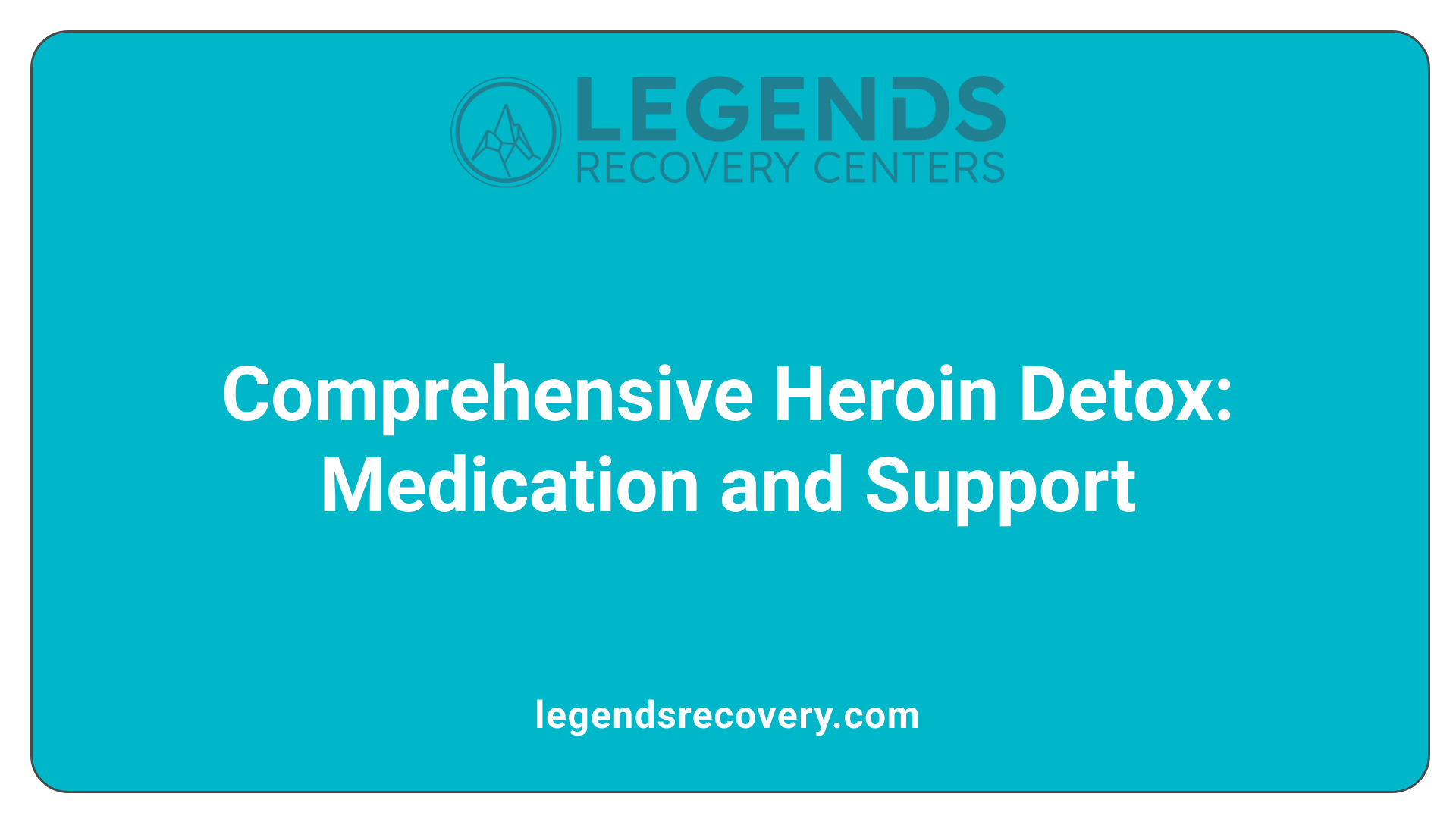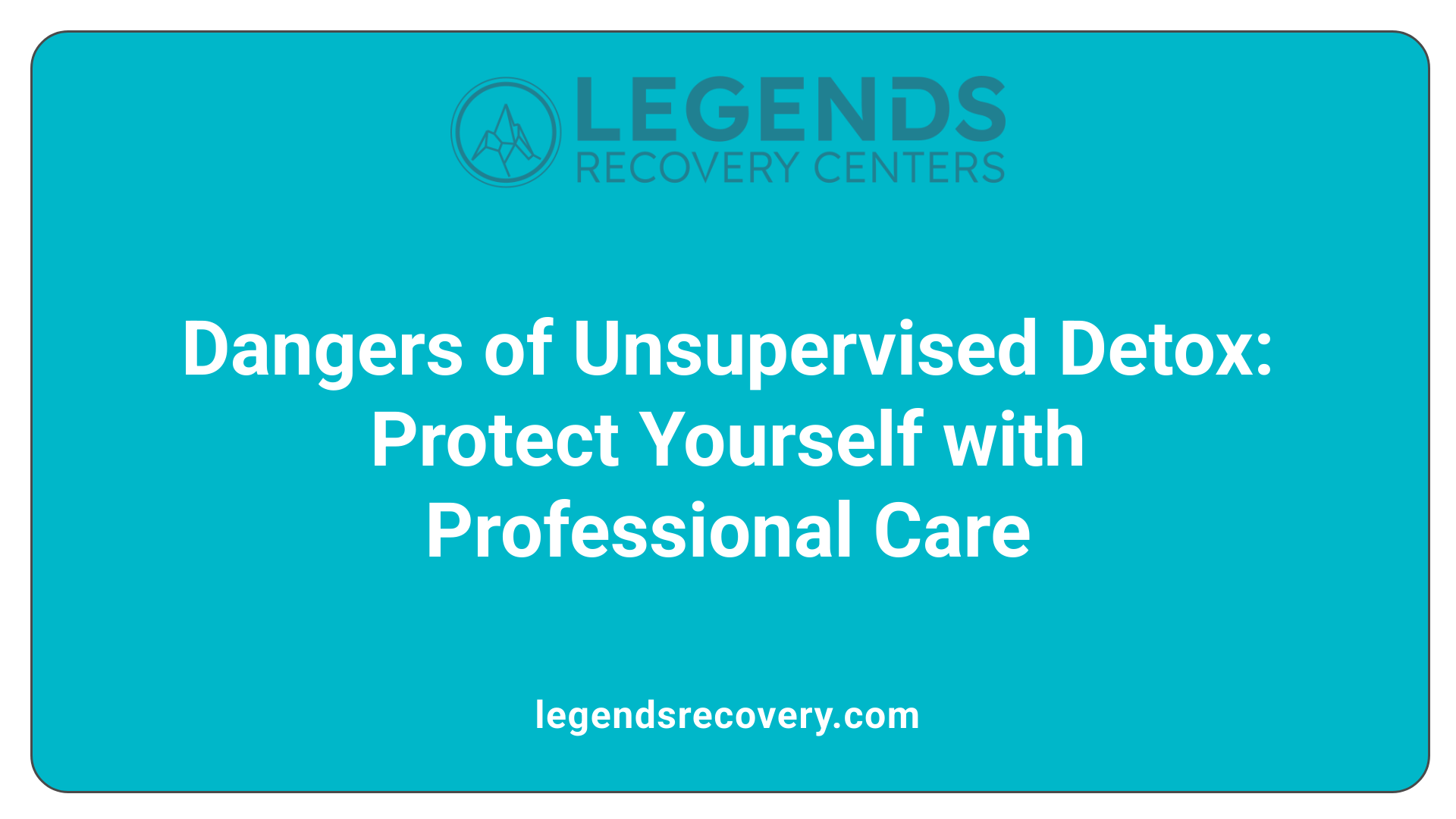Ensuring Safety and Success in Heroin Recovery Through Proper Detox Management

Heroin withdrawal can be strenuous and dangerous, necessitating the involvement of medical professionals to navigate the complexities of detoxification safely. Medically supervised detox involves a comprehensive approach that ensures safety, alleviates symptoms, and sets the stage for long-term recovery. This article explores why professional oversight is vital during heroin withdrawal, the processes involved, and how it significantly improves treatment outcomes.

Attempting heroin detox without medical supervision can be extremely dangerous. Without professional oversight, individuals are at increased risk of severe health complications such as seizures, dehydration, hallucinations, and delirium tremens. The intensity of withdrawal symptoms, which can include nausea, tremors, increased heart rate, and blood pressure fluctuations, makes self-detox risky and potentially life-threatening.
Lack of medical support can also lead to inadequate management of symptoms, making it harder for individuals to complete detox successfully. This increases the likelihood of relapse, overdose, or emergency medical situations. A supervised setting ensures that any arising complications are promptly addressed, greatly improving safety.
Certain withdrawal symptoms demand immediate medical intervention. These include seizures, severe delirium, rapid fluctuations in vital signs, intense hallucinations, and cardiovascular distress. In heroin withdrawal, symptoms like high fever, extreme agitation, and dehydration can quickly escalate without intervention.
Medical professionals are equipped to stabilize vital signs and administer emergency medications if necessary. For example, seizures can be controlled with anti-epileptic drugs, and dehydration can be managed with IV fluids. Recognizing these danger signs early is critical to prevent fatalities.
Medications are vital tools in medically supervised heroin detox. Drugs such as buprenorphine (Suboxone) and methadone act as partial and full opioid agonists, respectively, reducing cravings and easing withdrawal discomfort.
Clonidine and lofexidine are alpha-2 adrenergic agonists that help lower autonomic hyperactivity, alleviating symptoms like sweating, anxiety, and rapid heartbeat. Supportive medications like anti-nausea drugs, analgesics, and sleep aids are also used to improve comfort.
Administered under careful medical oversight, these medications ensure that withdrawal progresses safely, minimizing the risk of setbacks or complications. This structured approach creates a safer environment for individuals to transition through the critical stages of detox, paving the way for ongoing treatment and recovery.
Medically supervised withdrawal, often called detoxification, is a process where healthcare professionals administer medications to help ease the symptoms experienced when a person dependent on opioids stops using them. This supervision ensures that withdrawal occurs safely, reducing risks like severe discomfort, medical emergencies, or relapse.
Common medications used during detox include opioid agonists such as methadone and buprenorphine, which work by activating opioid receptors in a controlled way to lessen withdrawal symptoms and cravings. Non-opioid medicines like clonidine, lofexidine, hydroxyzine, gabapentin, and tizanidine are also used to target specific symptoms such as anxiety, sweating, or muscle aches.
The main goal of supervised detoxification is to manage and reduce withdrawal discomfort while ensuring safety. It helps patients transition smoothly into ongoing treatment for opioid use disorder, such as medication-assisted treatment (MAT), or to start appropriate medications like naltrexone. However, detox alone isn’t enough to treat addiction; it’s just the first step. Successful recovery typically requires additional therapies and long-term medication management to address underlying dependence.
In summary, medically supervised withdrawal provides a structured, safe environment to manage withdrawal symptoms effectively, making it safer and more comfortable for individuals seeking to recover from opioid dependence.

Supervision during heroin withdrawal is vital because it protects individuals from serious health risks that can occur as their bodies react to the absence of the drug. Heroin withdrawal can lead to severe symptoms such as dehydration, seizures, hallucinations, and rapid fluctuations in blood pressure or body temperature. Medical professionals continuously monitor vital signs like heart rate, blood pressure, oxygen levels, and hydration status to catch any signs of deterioration early.
Supervised detox also involves administering medications such as methadone or buprenorphine. These drugs help reduce withdrawal discomfort and cravings, making the process more manageable and decreasing the chances of relapse. Professionals can adjust medication doses on the spot based on a patient’s response, further customizing care to maximize safety and comfort.
In addition to medical management, supervision provides emotional and psychological support. Facing withdrawal alone can be overwhelming, leading to anxiety, depression, or panic. Having trained staff available round-the-clock offers reassurance, helps address mental health challenges, and maintains motivation for recovery.
Tailoring detox protocols to each individual’s substance use history, health status, and co-occurring conditions makes treatment safer and more effective. Whether in an inpatient or outpatient setting, professional supervision ensures that all necessary medical and emotional needs are managed swiftly.
Overall, supervision during heroin withdrawal reduces the risk of life-threatening complications, improves comfort, and strengthens the foundation for ongoing treatment and recovery.

Heroin withdrawal treatment options encompass both medication-assisted strategies and supportive therapies to ensure safety and comfort during detox.
Medications play a crucial role in managing withdrawal symptoms and preventing complications. Drugs such as methadone, buprenorphine (found in Suboxone), and lofexidine are commonly used. Methadone is a long-acting opioid agonist that reduces withdrawal discomfort and cravings, administered under strict medical supervision in approved clinics.
Buprenorphine, a partial opioid agonist available as Suboxone (which contains naloxone to deter misuse), offers similar benefits with a lower risk of overdose. It not only alleviates withdrawal symptoms but also helps prevent relapse by decreasing drug cravings.
Lofexidine is an alpha-2 adrenergic agonist, FDA-approved in 2018, which helps to lessen symptoms like anxiety, agitation, and sweating.
Alongside medication, behavioral therapies such as cognitive-behavioral therapy (CBT) and contingency management are essential. These therapies address psychological aspects of dependence, promote coping skills, and support long-term sobriety.
Monitoring withdrawal symptoms closely is vital. Healthcare professionals use tools like the Clinical Opioid Withdrawal Scale (COWS) to assess severity and adjust treatments accordingly.
For a detailed overview of heroin detox treatment options, research in medical literature and addiction treatment guidelines provides in-depth insights.
| Treatment Option | Description | Purpose |
|---|---|---|
| Methadone | Long-acting opioid agonist | Reduce withdrawal discomfort and cravings |
| Buprenorphine | Partial opioid agonist (Suboxone) | Manage withdrawal, decrease overdose risk |
| Lofexidine | Alpha-2 adrenergic agonist | Alleviate adrenergic symptoms like anxiety and sweating |
| Naltrexone | Opioid antagonist (Vivitrol) | Block effects of opioids post-detox |
Effective heroin detox programs combine these medications with supportive care, round-the-clock monitoring, and therapeutic interventions.
Professional supervision in medical detox settings is strongly recommended to reduce risks such as seizures, hallucinations, or severe dehydration that may occur if detox is attempted alone.
Continuing care after detox, including addiction counseling and medication-assisted treatment, significantly improves the chances of sustained recovery.
Completing detox successfully provides a crucial platform for ongoing sobriety efforts. It physically and psychologically stabilizes individuals, alleviates withdrawal symptoms, and reduces cravings — all factors that can otherwise make subsequent treatment more difficult.
Detox serves as an initial step that prepares patients to engage fully with therapies and medication-assisted treatments. Once the immediate physical dependence is addressed, treatments like naltrexone, buprenorphine, or methadone can be continued to help maintain abstinence.
Behavioral therapies, including cognitive-behavioral therapy (CBT) and motivational interviewing, target underlying emotional and mental health issues that contribute to substance use.
Support systems—such as family involvement, peer support groups, and community resources—offer essential encouragement and accountability to sustain sobriety.
Overall, detox acts as a foundation upon which long-term recovery strategies are built, significantly increasing the chance of enduring abstinence and a healthier, addiction-free life.

Attempting detox from heroin without professional supervision can pose serious health dangers. The withdrawal process often includes severe symptoms such as seizures, hallucinations, delirium tremens, and respiratory distress.
Without medical oversight, individuals cannot effectively manage these symptoms or respond promptly to emergencies. This significantly increases the risk of life-threatening complications or even death during the detox process.
Furthermore, unsupervised detox lacks access to medications like buprenorphine, methadone, or clonidine that are used in supervised programs to lessen withdrawal discomfort and stabilize vital signs. This absence heightens the chances of overwhelming withdrawal symptoms, which can lead to medical emergencies.
A critical concern with unsupervised detox is the increased likelihood of relapse. Without professional support and medication assistance, individuals may find it difficult to endure withdrawal symptoms, leading to a quick return to drug use.
In summary, detoxing from heroin alone is dangerous due to the inability to manage severe symptoms, respond to complications, and ensure safety. Medical detox programs with trained healthcare professionals provide essential monitoring and supportive care, making them the safest route for those withdrawing from heroin.
Medically supervised detox provides a safe environment where healthcare professionals can monitor vital signs and manage severe withdrawal symptoms. Medications like buprenorphine, methadone, and lofexidine help ease discomfort and reduce the risk of dangerous complications such as seizures or dehydration. Continuous assessment and prompt intervention make the withdrawal process more manageable and less distressing for the individual.
Completing detox under professional supervision creates a strong foundation for ongoing recovery. It ensures that individuals are physically stabilized, which increases their motivation to continue with therapy and medication-assisted treatments. The support and guidance during detox help build trust in the treatment process, encouraging patients to stay engaged with their long-term recovery plans.
Effective detox minimizes the risk of lasting health issues caused by prolonged substance abuse, such as liver damage, cardiovascular problems, or neurological impairments. Additionally, managing withdrawal properly reduces the likelihood of relapse, which can protect individuals from overdose and other serious health complications later on.
| Benefit | Description | Additional Insights |
|---|---|---|
| Improved safety | Continuous medical monitoring prevents severe complications during withdrawal. | Reduces risk of seizures, heart problems, dehydration. |
| Comfort and support | Medications and emotional care ease withdrawal symptoms. | Increases patient willingness to complete detox. |
| Long-term health | Decreased likelihood of chronic health issues linked to substance abuse. | Supports physical recovery and reduces healthcare costs. |
| Treatment engagement | Sets the stage for ongoing therapy and medication. | Promotes long-term sobriety and relapse prevention. |
Using medical detox as a part of comprehensive treatment helps maximize recovery success and safeguard overall health. This approach not only addresses the immediate dangers of heroin withdrawal but also promotes sustained well-being.
Medically supervised detox is an essential component of heroin addiction treatment, significantly enhancing safety, comfort, and outcomes. By providing continuous monitoring, medication management, and emotional support, professional detox programs create a stable platform from which individuals can engage confidently in long-term recovery efforts. Attempting detox alone poses serious health risks and diminishes the chances of sustained sobriety. Therefore, seeking medical supervision is not only a safest choice but also a vital step toward a healthier, drug-free life.